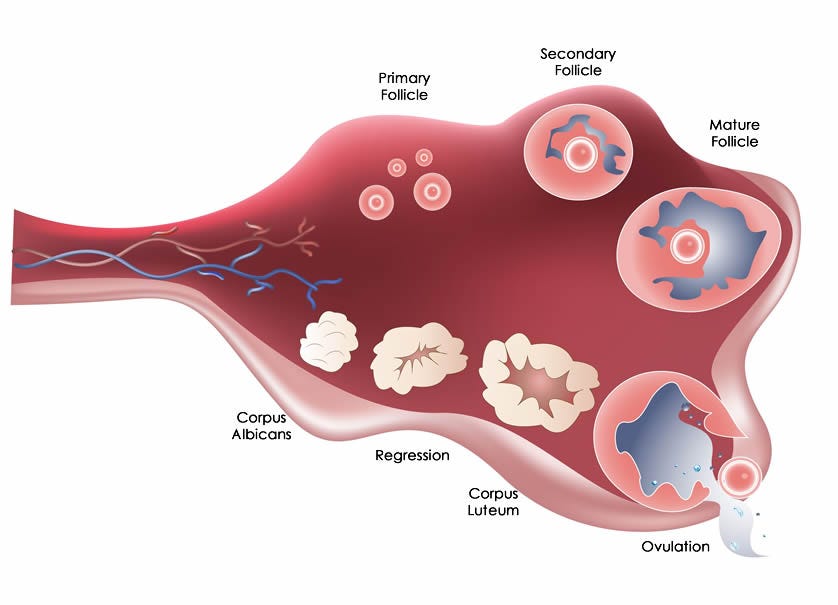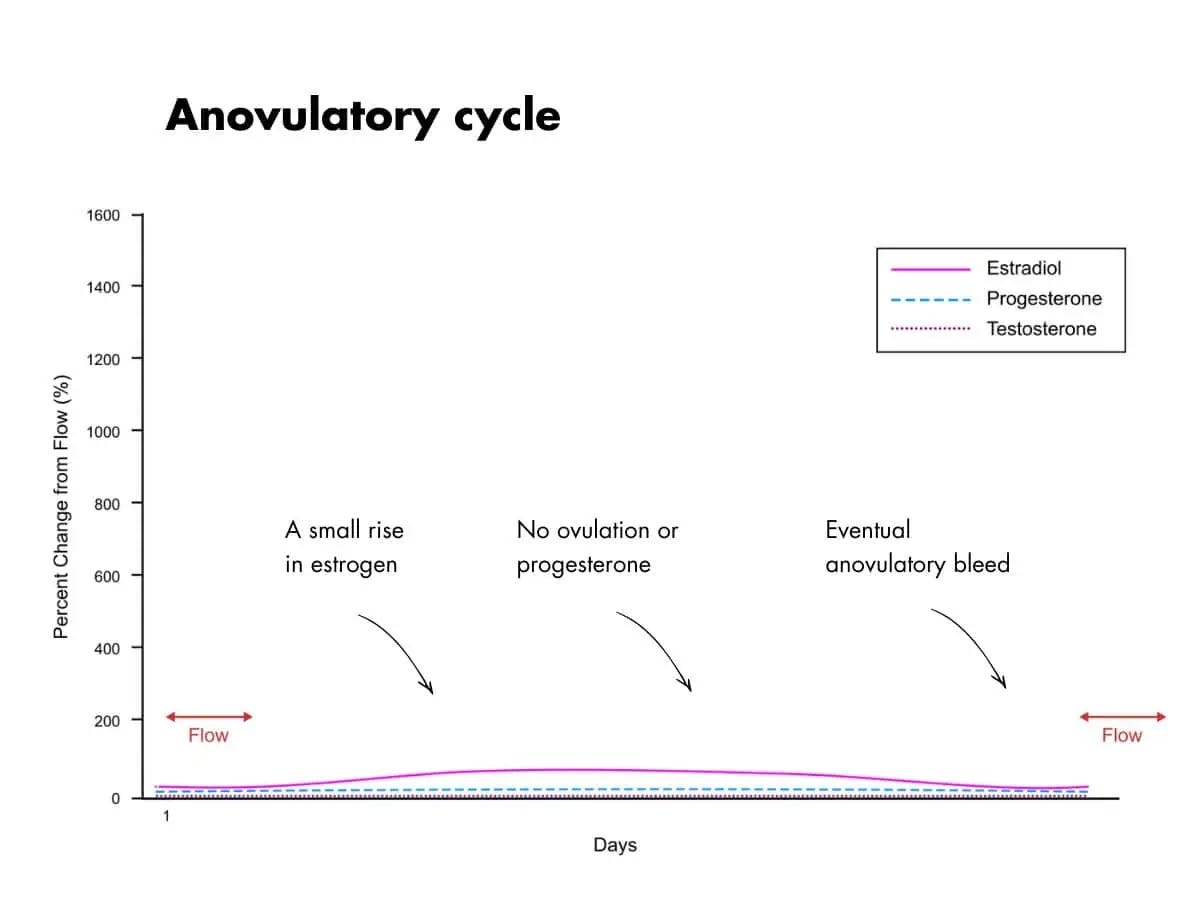Ovulation is a helluva drug.
"When I ovulated for the first time, I cannot describe to you how crazy it was."
“When I ovulated for the first time, I cannot describe to you how crazy it was,” singer and songwriter Lorde recently told Rolling Stone. “One of the best drugs I’ve ever done.”
I was thrilled to see “ovulation” mentioned in a mainstream publication.
A lot of my work as a Fertility Awareness Educator has to do with educating folks on what ovulation is and why it matters in the first place.
Many clients come to me thinking their period is the “main event” of their cycle - and I thought the same before I began this work!
When it comes to cycle health, ovulation is key. It’s about so much more than conceiving or not conceiving.
But what is it and why is it “one of the best drugs” Lorde has ever done?
Physiology of ovulation
Ovulation is the release of an egg from your ovary.
Not all eggs in our bodies will be ovulated. We generally have more eggs that we do cycles.
This image shows the ovary and the process that each egg goes through over time:
Each egg we have is in a follicle (see: primary follicle). They sit dormant until cued by hormones, and then they move through a ripening process.
The egg moves from primary follicle through this ripening, luteinizing process. As it’s ripening, it produces a hormone called estradiol (a kind of estrogen).
Once you have enough hormonal activity, the egg is released from the follicle and out of the ovary wall: this is ovulation!
After ovulation, that empty follicle - now called the corpus luteum - secretes progesterone (more on estradiol and progesterone in a moment).
Hormonally, a natural menstrual cycle looks something like this:
You can see that before ovulation (the follicular phase), the body makes estradiol. After ovulation (the luteal phase), the body creates progesterone.
These hormones are superstars in their own right.
The superpowers of estradiol & progesterone
So what’s the big deal about these two hormones?
Estradiol is a kind of estrogen that drives the first half of your cycle during your reproductive years.
It has a range of functions in our bodies. It’s vital for:
Glucose homeostasis
Immune robustness
Bone health
Cardiovascular health
Fertility
Neural functions
Progesterone kicks in around ovulation, where it helps control and maintain the buildup of the uterine lining in anticipation of pregnancy. If an egg isn’t fertilized, progesterone levels fall, and the lining is shed through menstruation.
Progesterone is crucial for:
Salt & water balance
Regulation of blood pressure
Stress adaptation
Protection against tumors
Neurogenesis/neuroprotection
Reproduction
…and more!
Progesterone and estradiol like the yin and yang of the cycle, and when they’re in balance, it’s a beautiful dance.
No ovulation, no progesterone
If you’re experiencing anovulatory cycles, there’s no luteal phase - and therefore none of the amazing benefits of progesterone.
Hormonally, an anovulatory cycle looks like this:
Having the occasional anovulatory cycle may be normal, but if it’s frequent, there may be an underlying cause - which could be anything from PCOS, perimenopause, coming off hormonal birth control, undernourishment, and more.
How do you know if you’re ovulating?
Now, here’s the kicker: just because you’re bleeding doesn’t mean you’re ovulating.
Anovulatory cycles eventually have breakthrough bleeds, when the uterine lining gets released - but it’s not what we call a “true bleed.” A “true bleed” only follows ovulation.
This means if you’re on hormonal birth control that suppresses ovulation, you’re not experiencing a real period!
One of the best ways to understand if you’re ovulating is by learning to chart your cycle with a sympto-thermal method. That’s a method that uses two biomarkers to identify when you’re potentially fertile: cervical fluid & basal body temperature.
Progesterone causes your basal body temperature to rise, so we use it to cross-check whether ovulation has occurred.
Here are some things that will not reliably let you know if you’re ovulating that I get asked about all the time as a Fertility Awareness Educator:
LH strips
LH tests detect luteinizing hormone (LH) which typically triggers ovulation - but not always. A surge in LH doesn’t guarantee that ovulation will happen. Your body can gear up to ovulate but not succeed, so an LH test alone doesn’t confirm an egg was actually released.
Ovulation pain
A study of found that ovulatory pain symptoms only occurred in 34% on the day of ovulation - and in 63% cases it may be experienced/starts considerably earlier (up to 6 days earlier!)
A predictive cycle charting app
A 2018 study found that the accuracy of ovulation prediction by apps was no better than 21%. And as a Fertility Awareness Educator, I’m seeing instances where technology like Oura Rings is not aligned with a client’s day-to-day assessment of their fertility.
Learning to chart your cycle
I teach a science-backed method of cycle charting to help you reliably understand if and when you’re ovulating. It will let you move beyond the apps and algorithms into a day-to-day assessment of your fertility - and sense of autonomy that no one can take away from you.
If you’re interested in learning how to track your cycle to help you work in harmony with your body, our CycleSense cohort begins in July!
You’ll learn how to chart and interpret your cycle - and the course includes two individual session so you can feel confident in your own practice.
Use the discount code CYCLESTACK for 10% the class series.
To learn more, visit helloearthbody.com/class-series
With gratitude,
Kate







